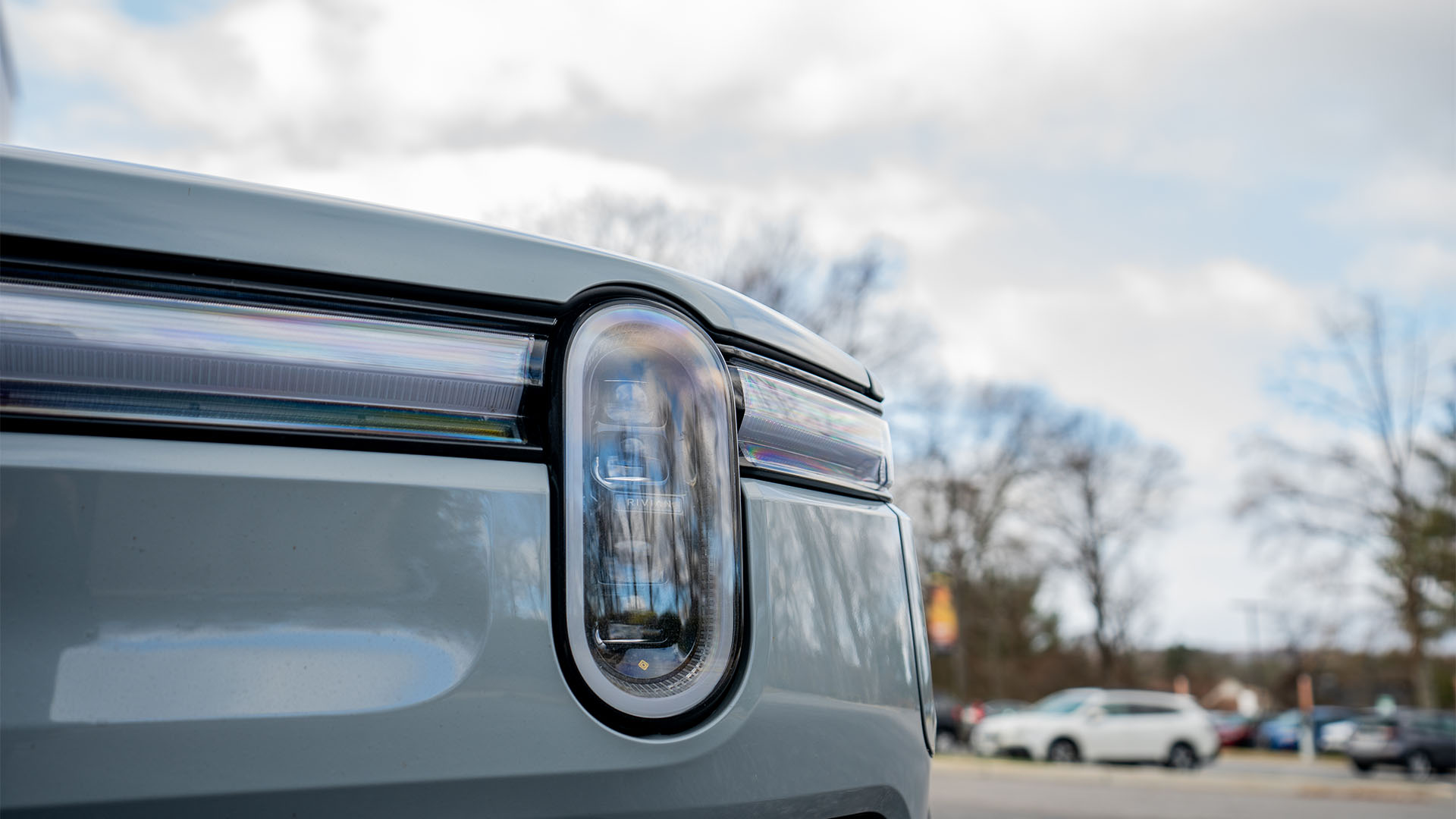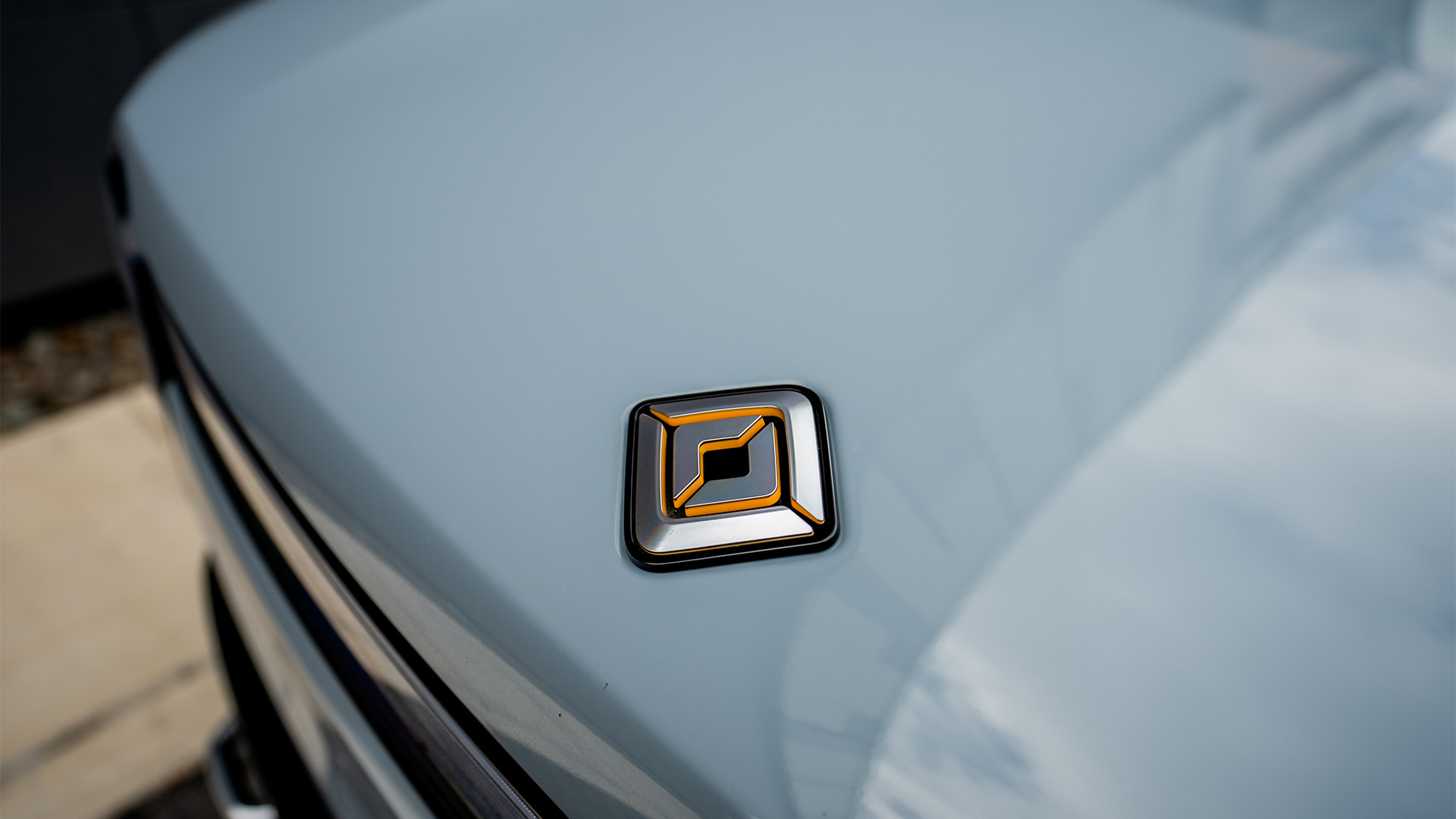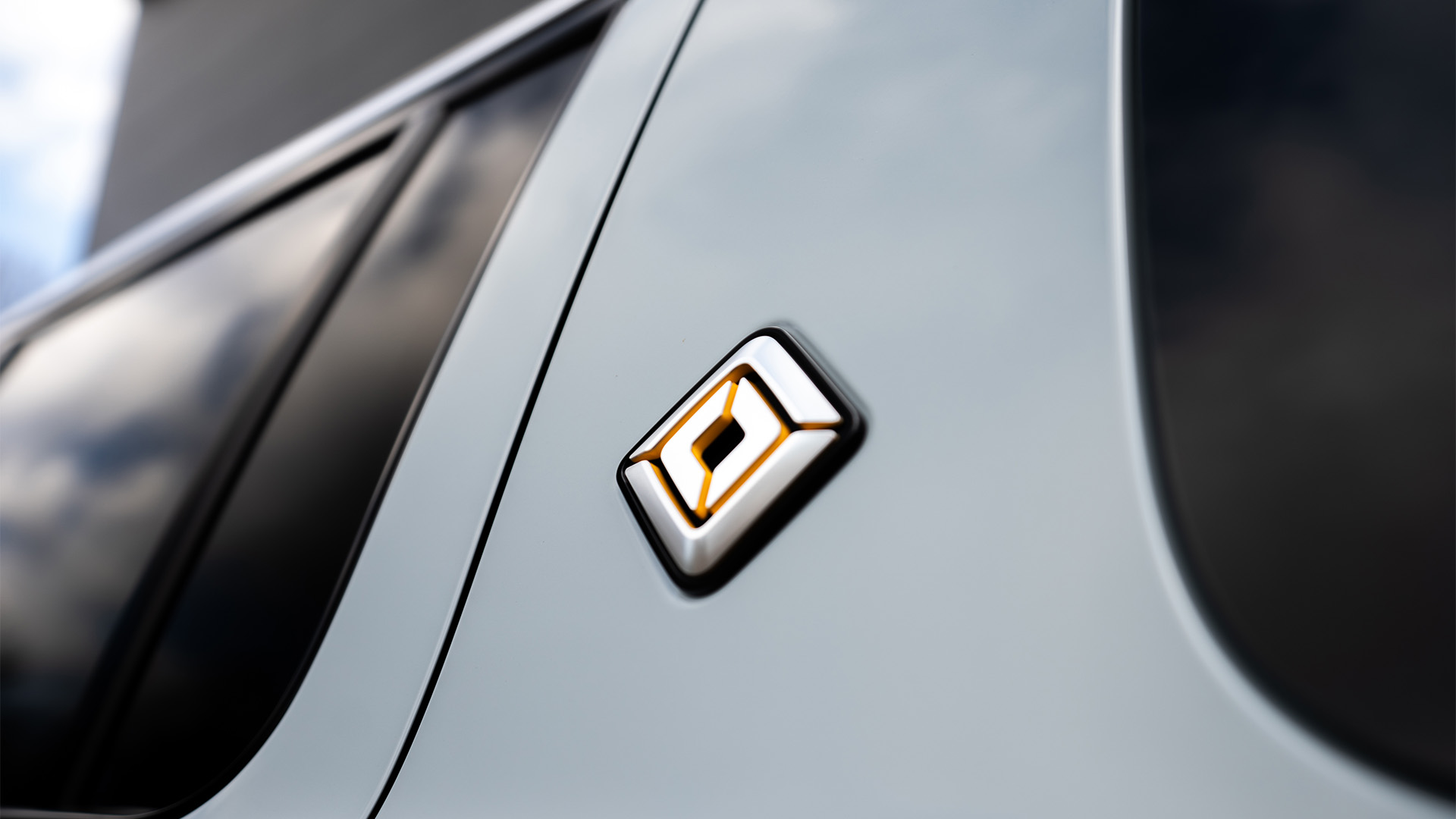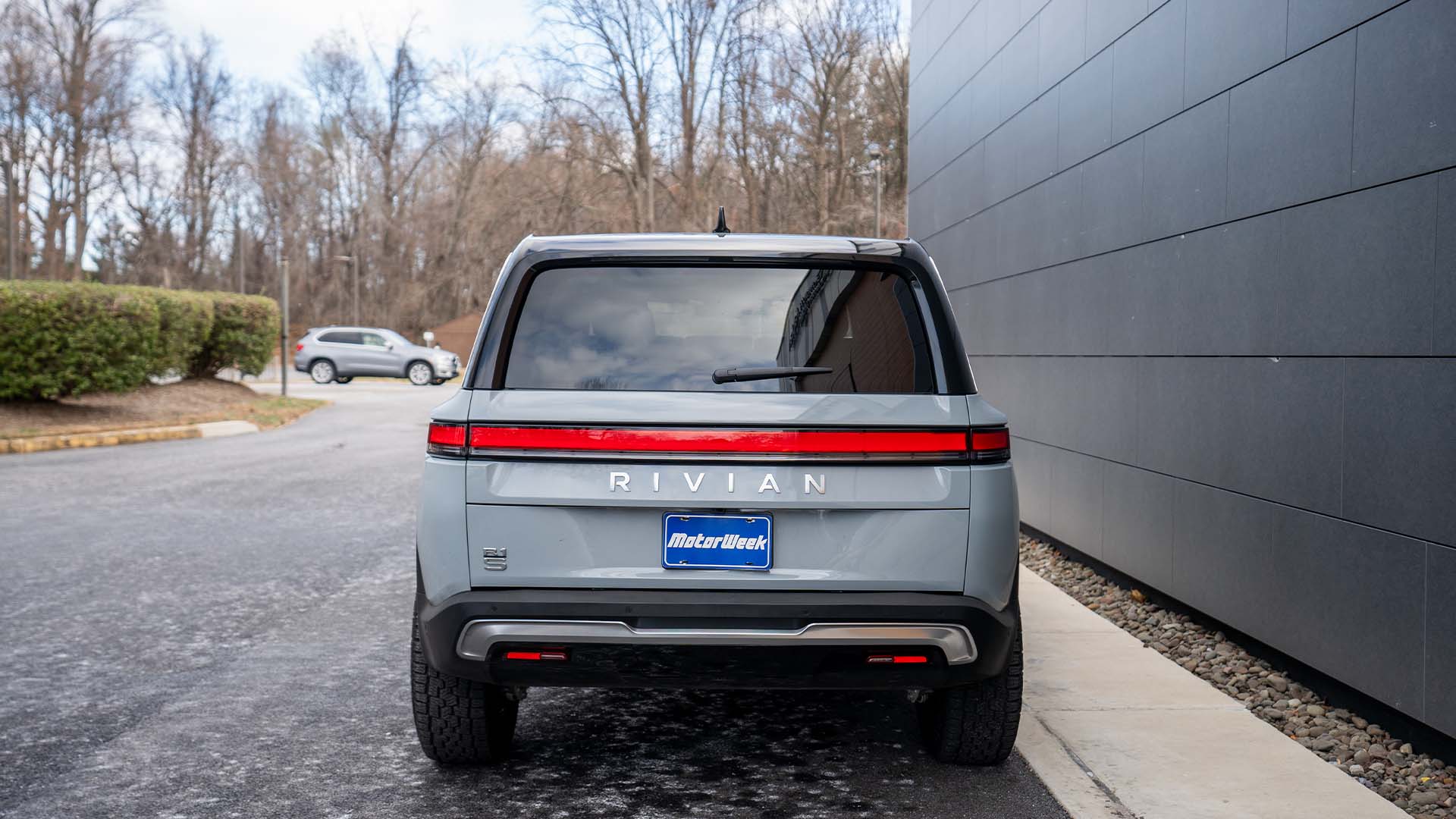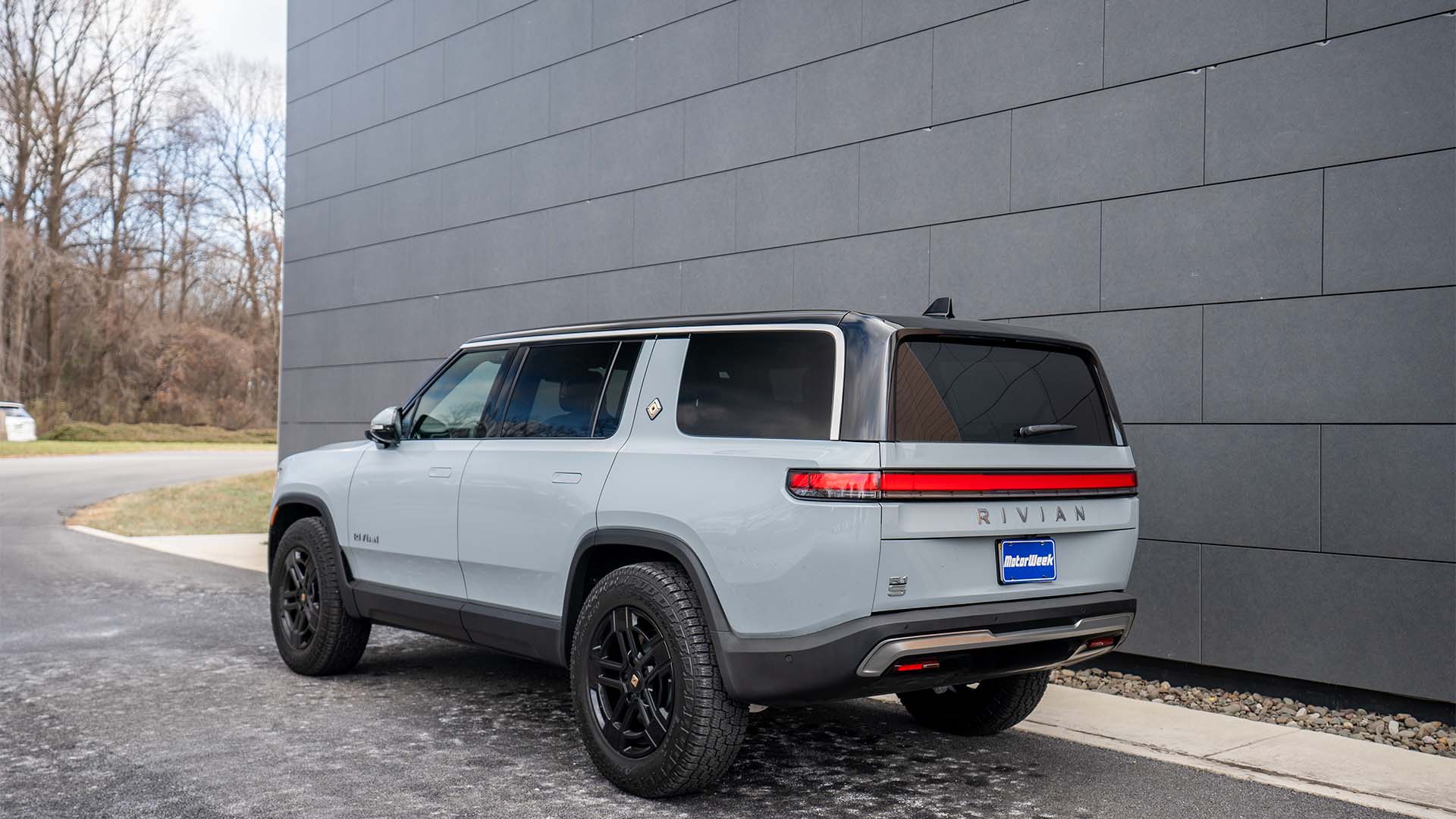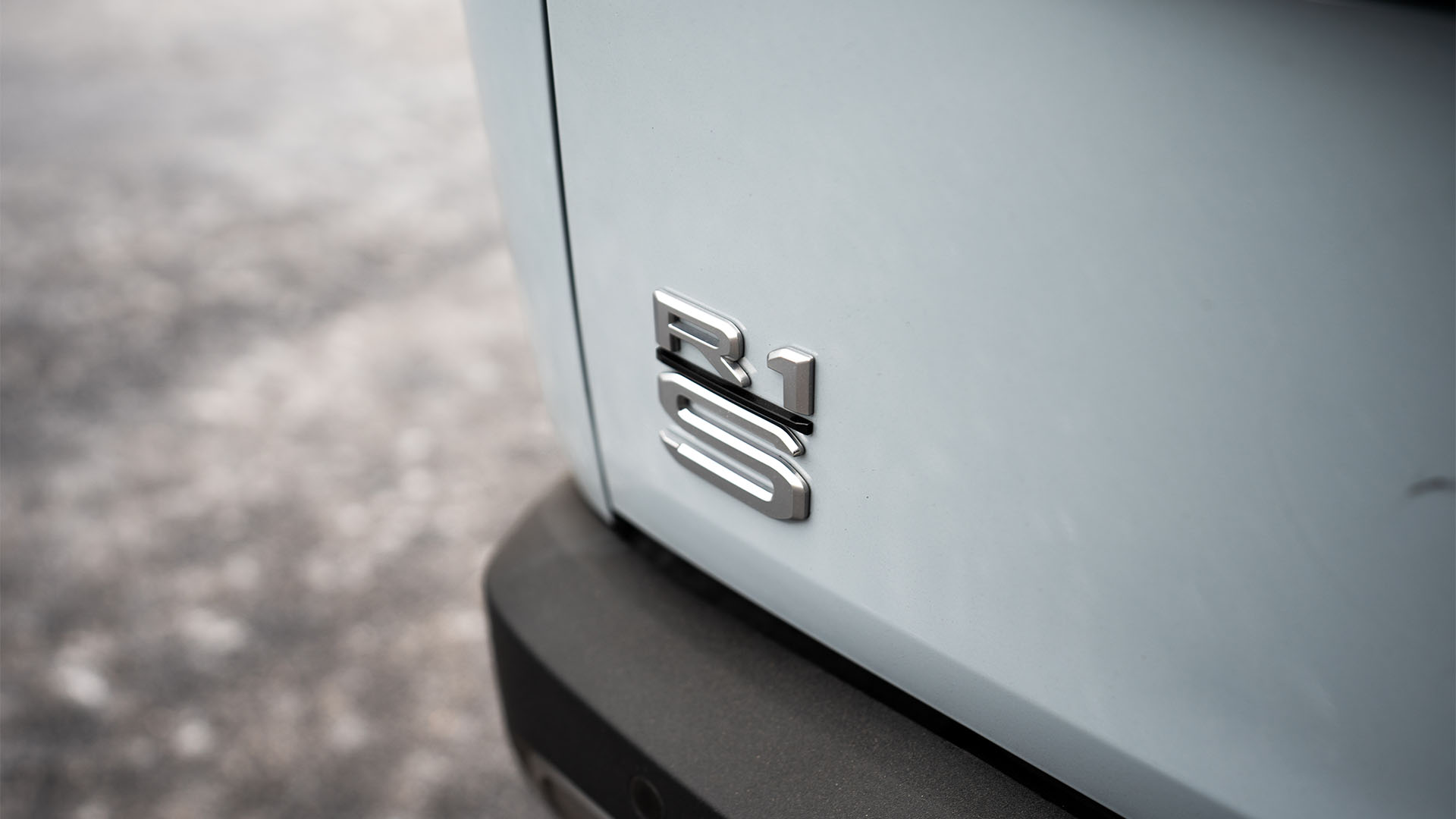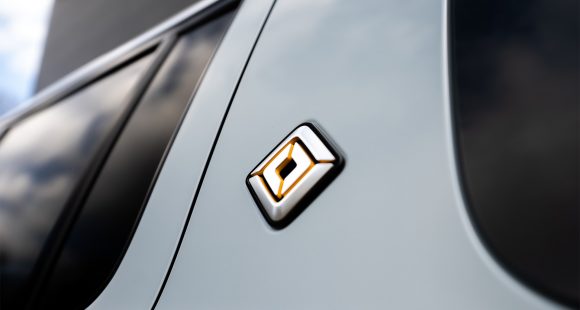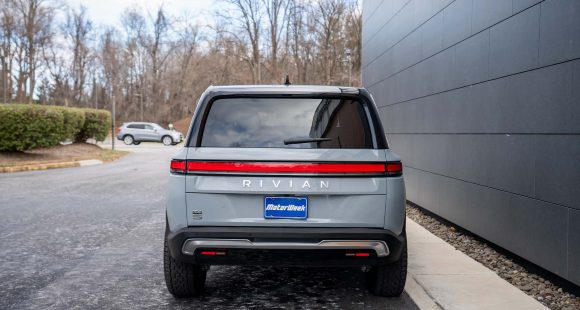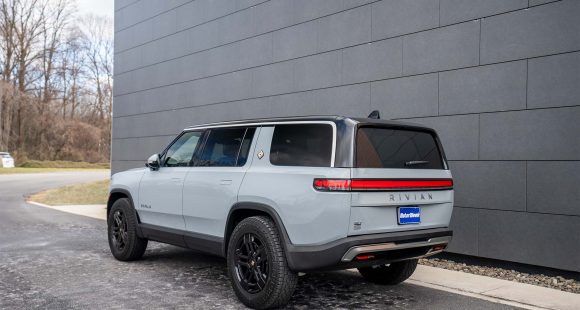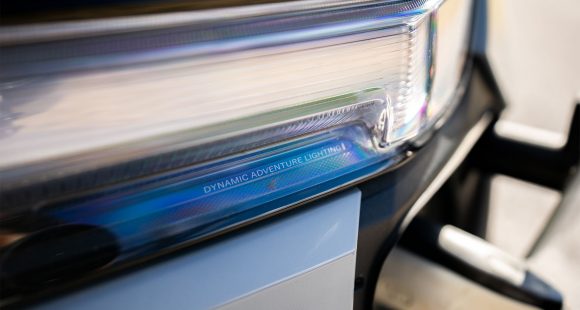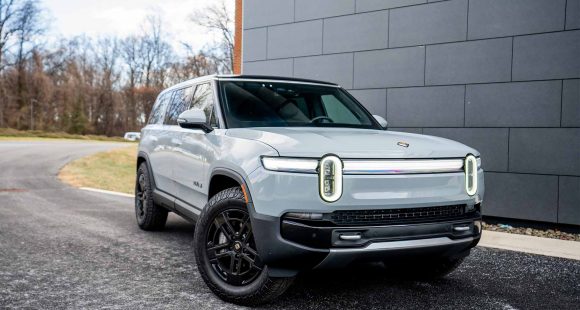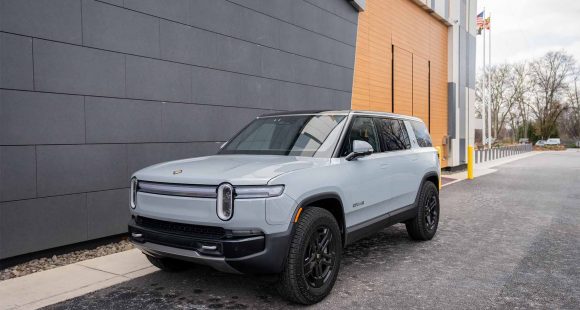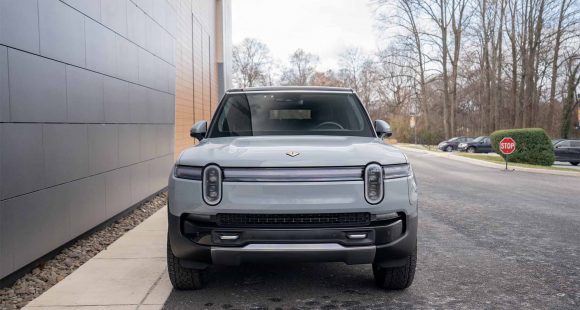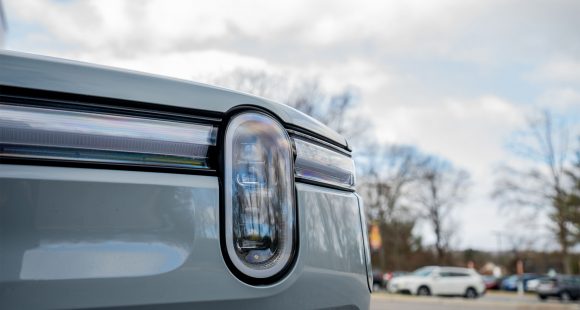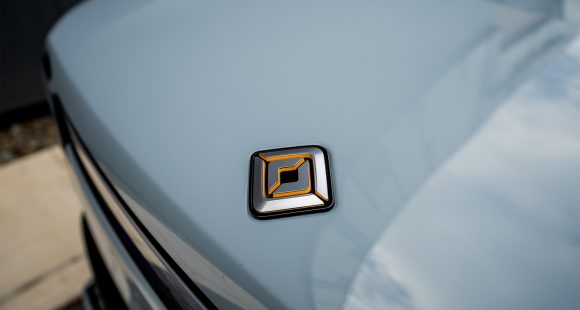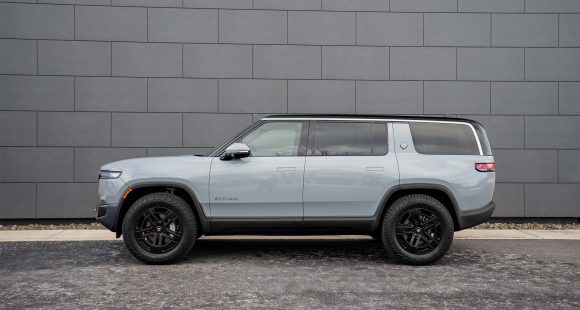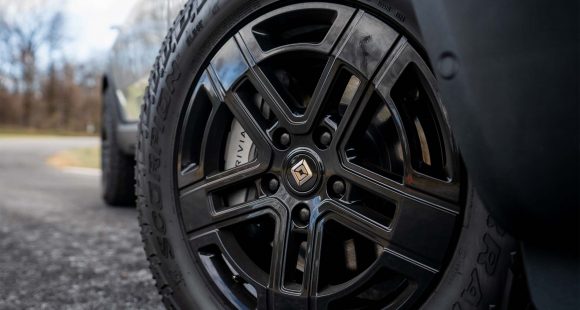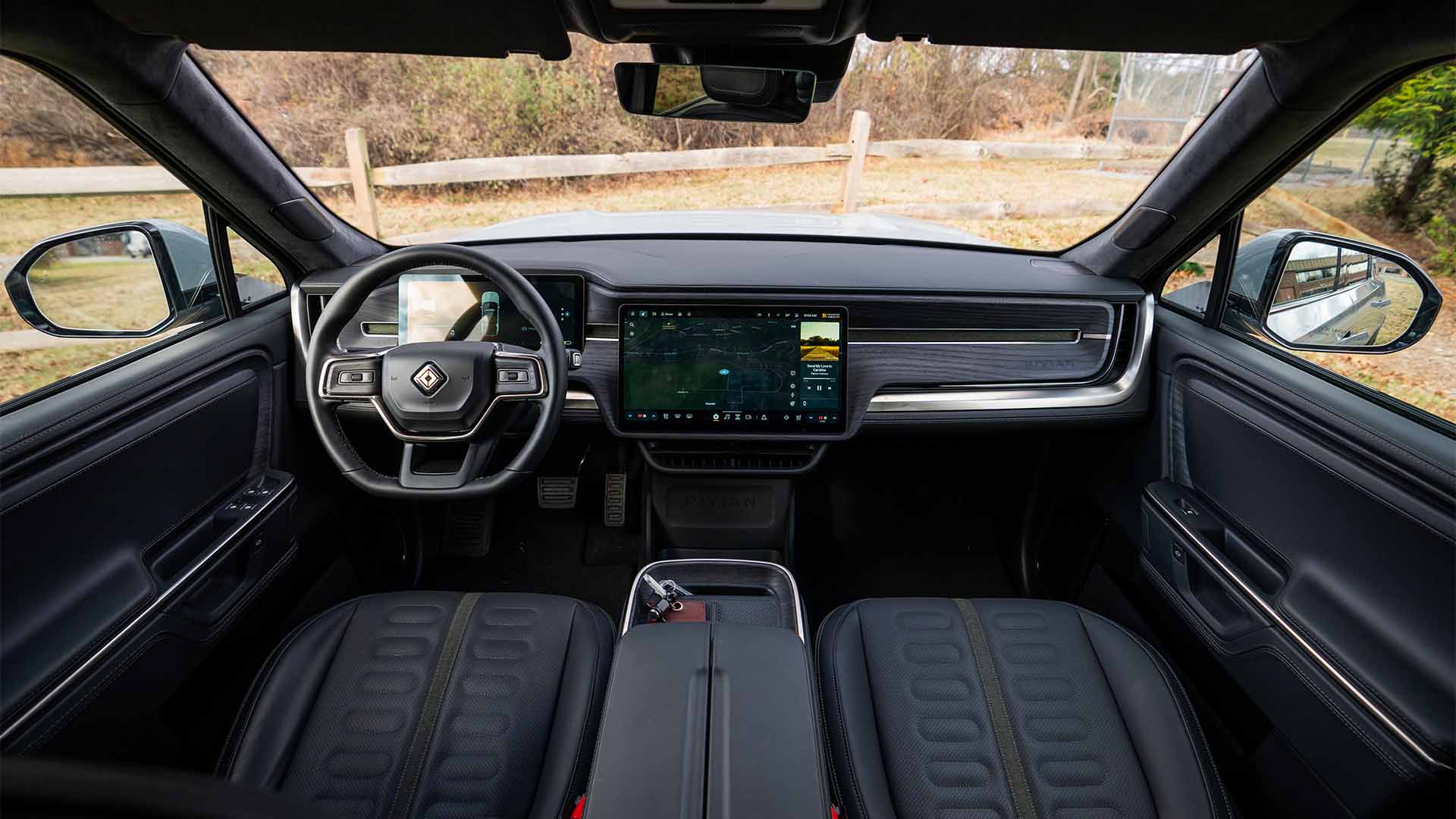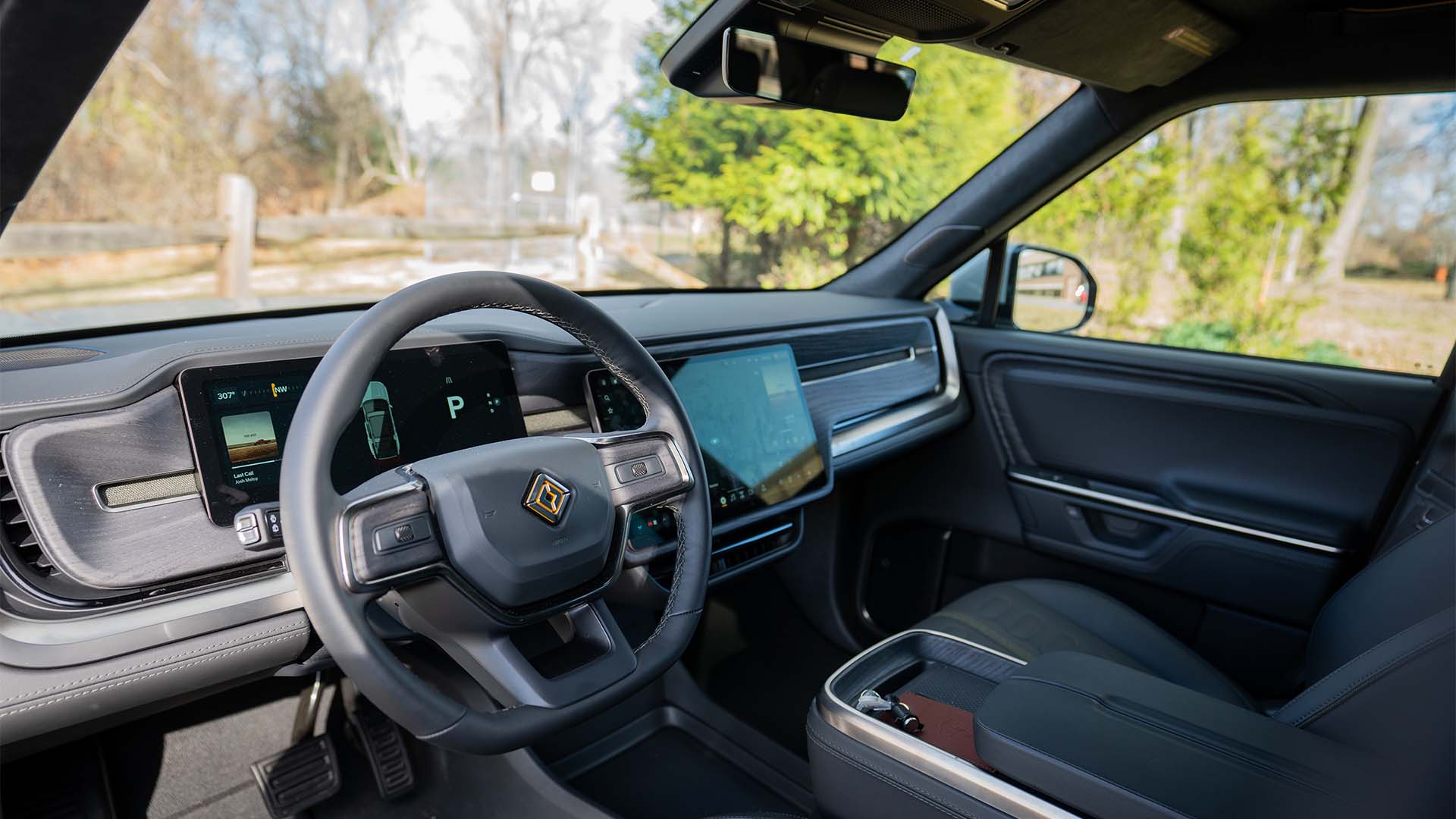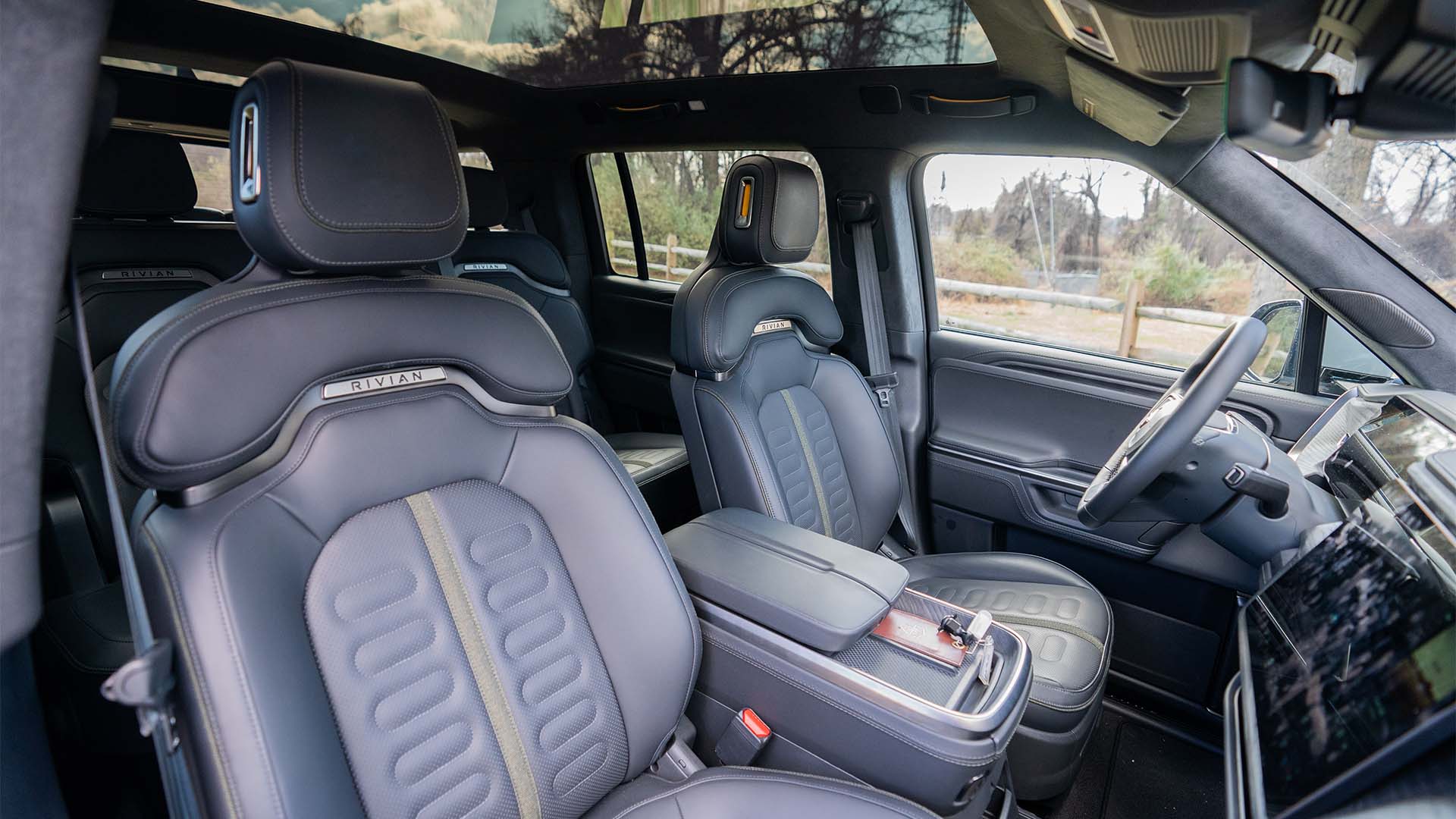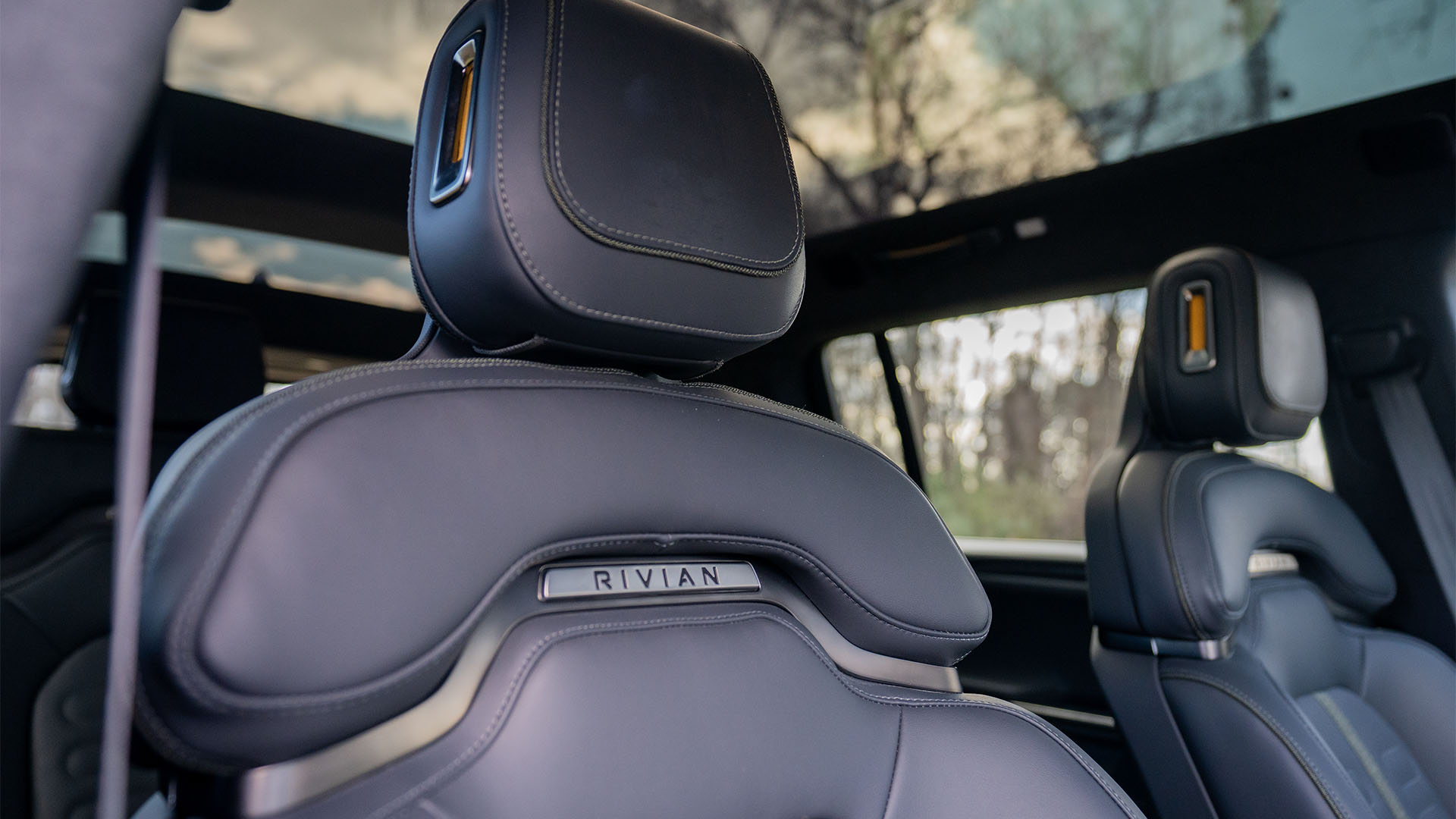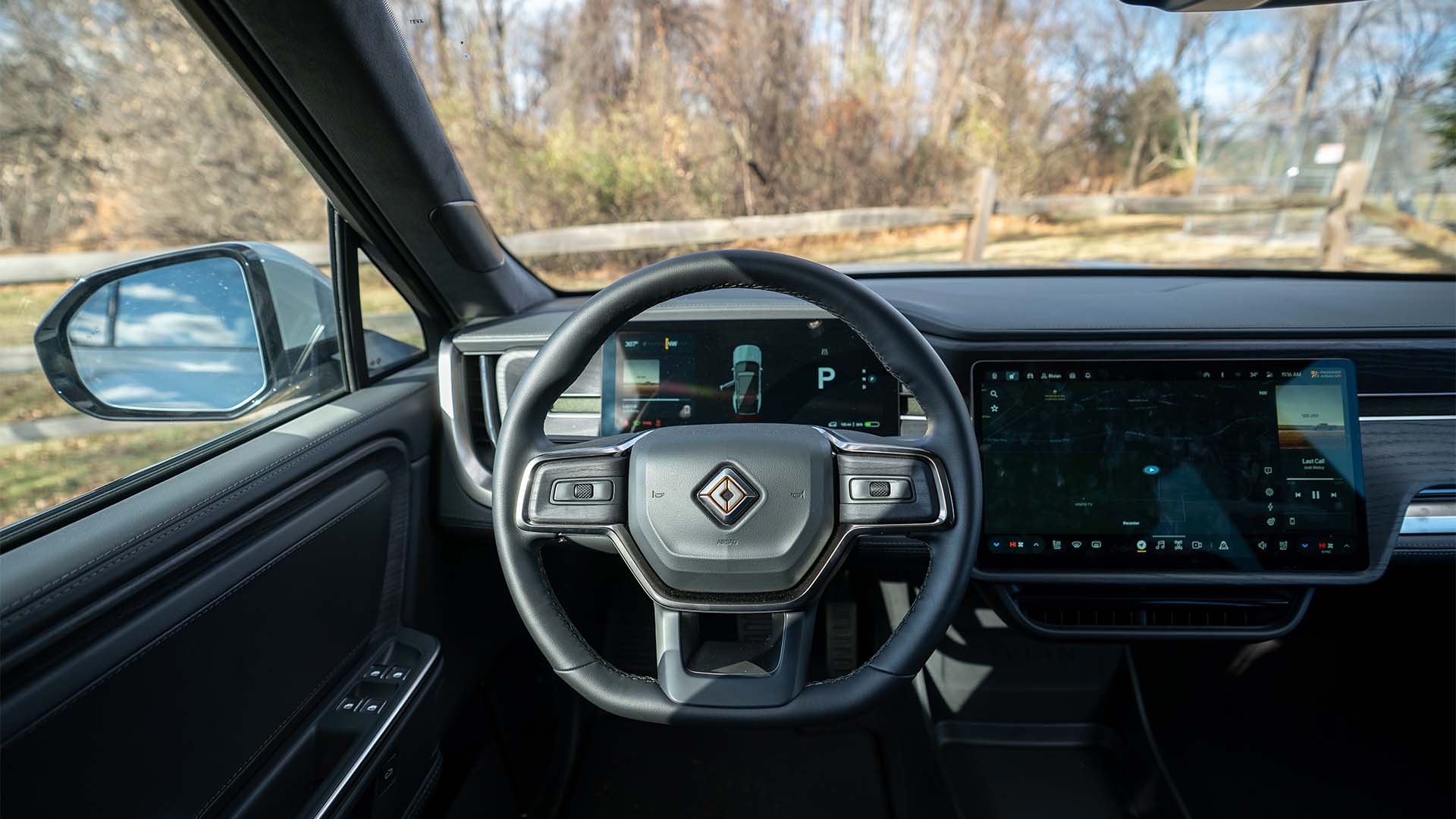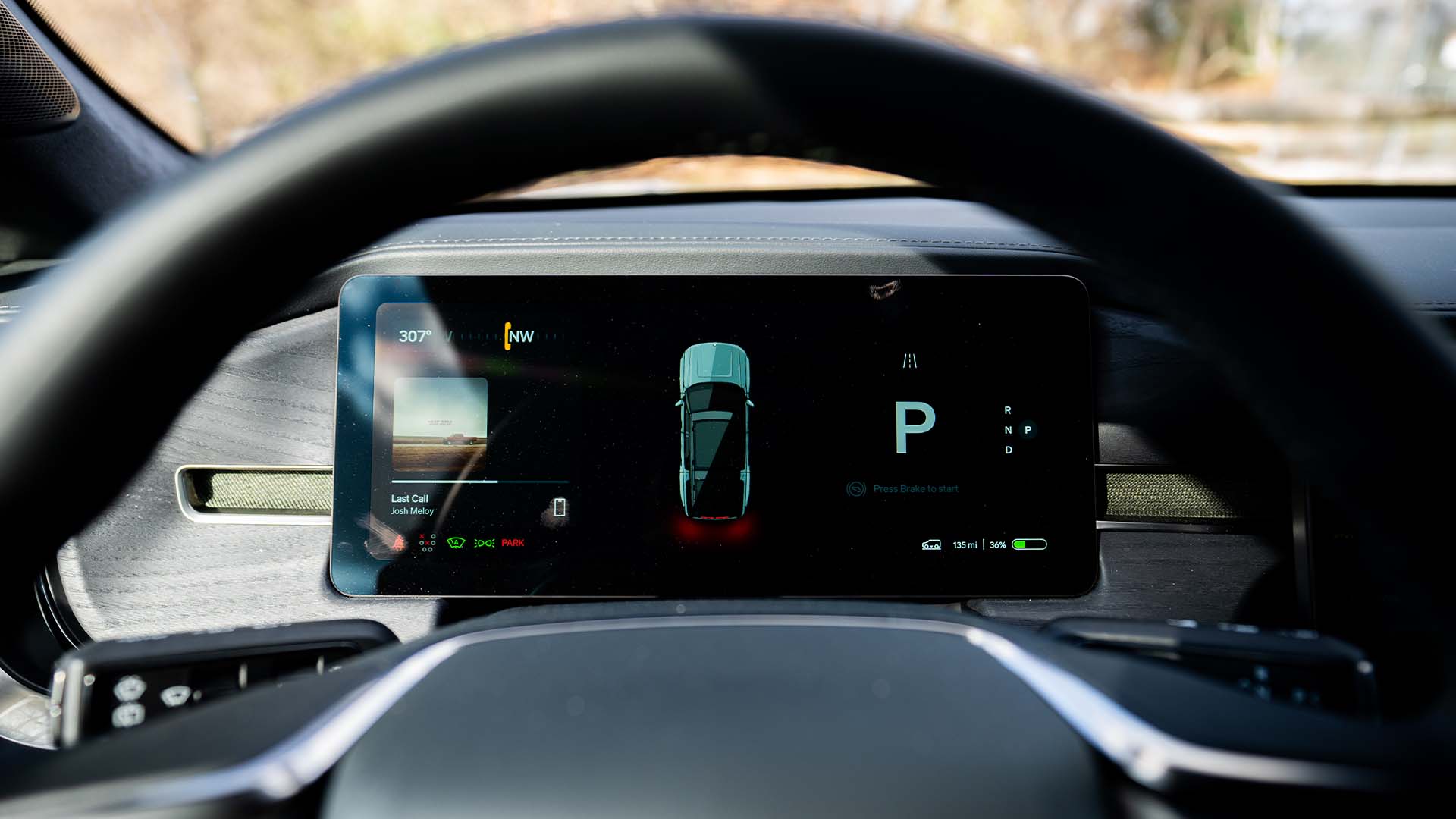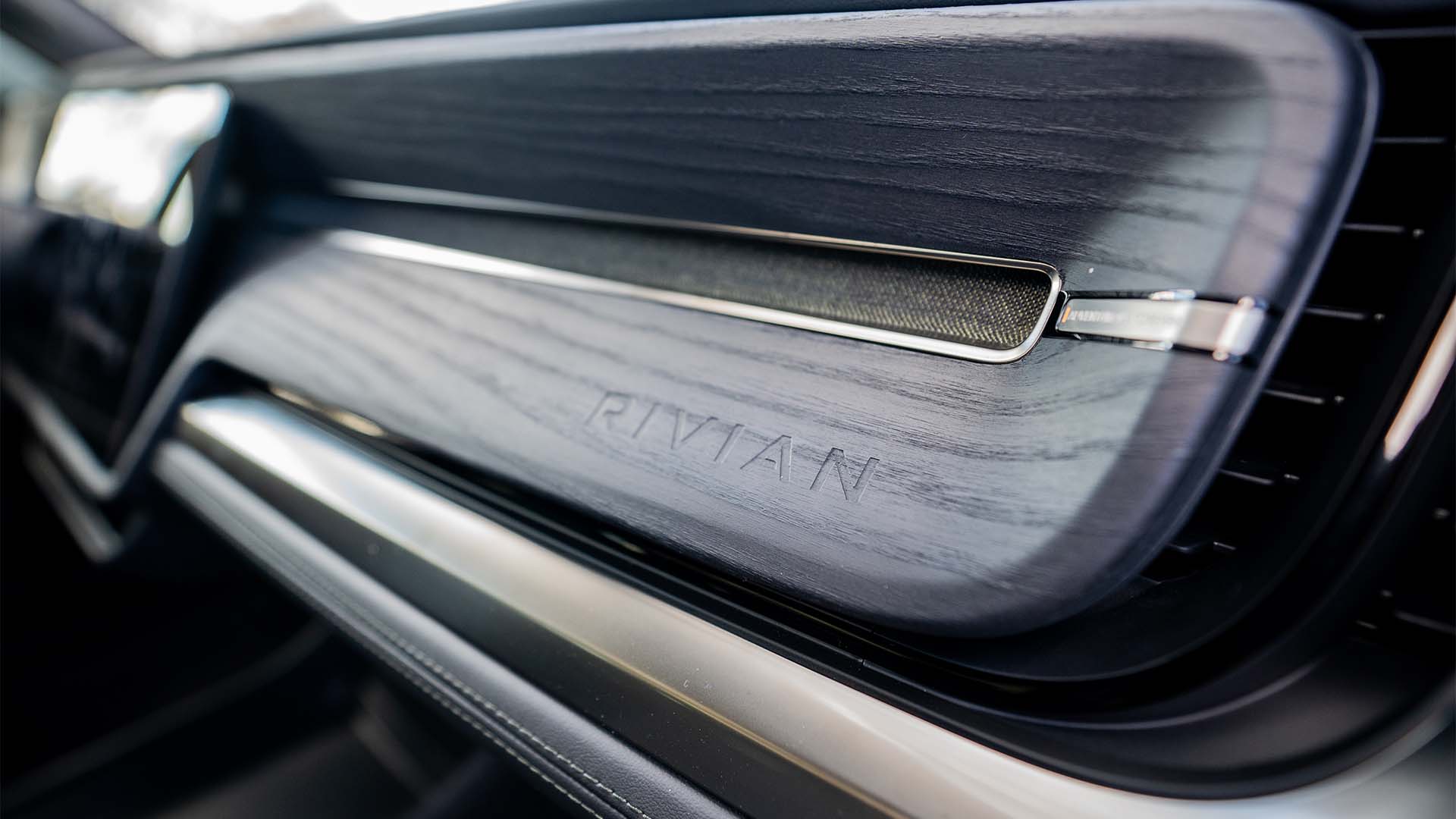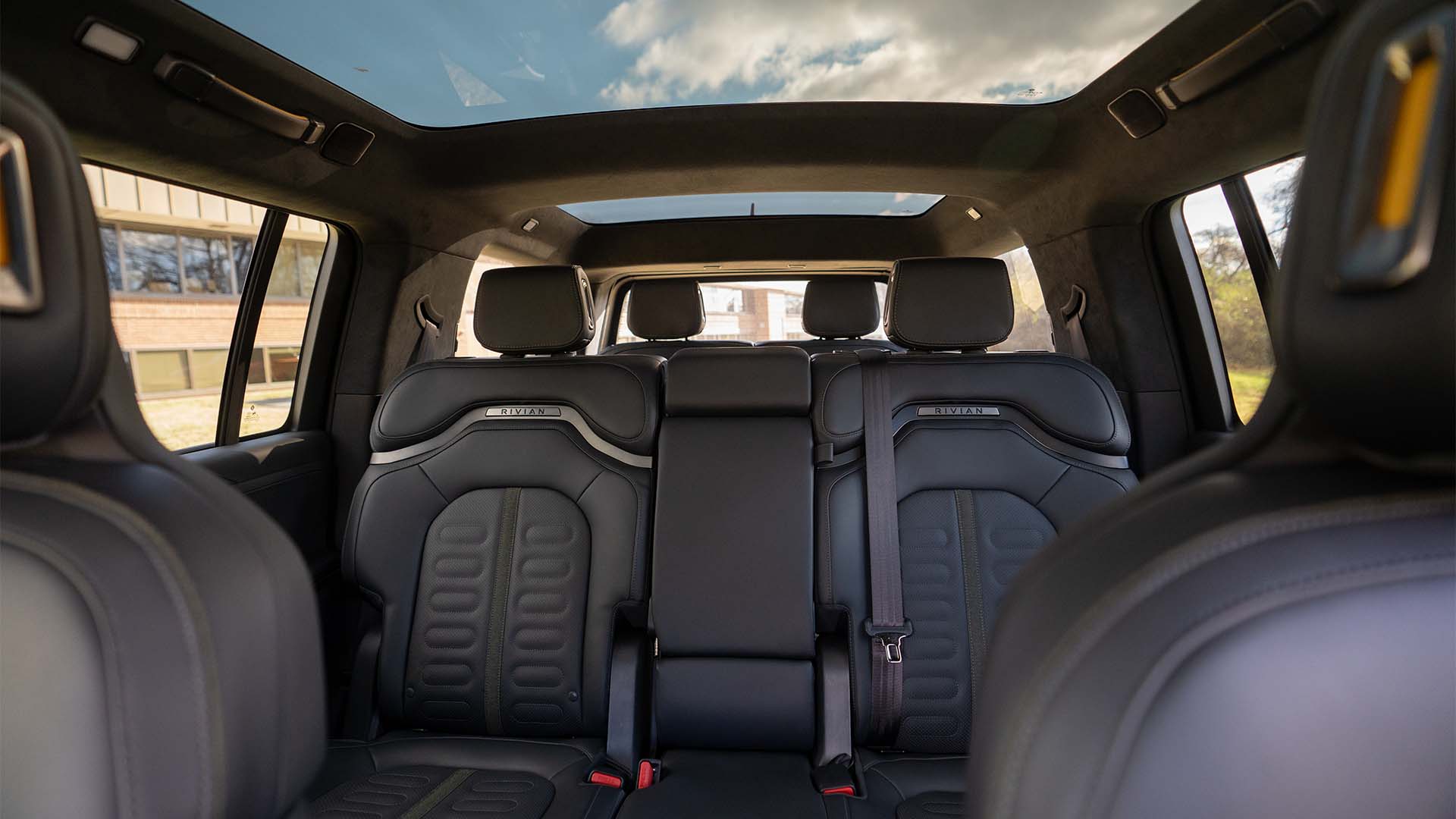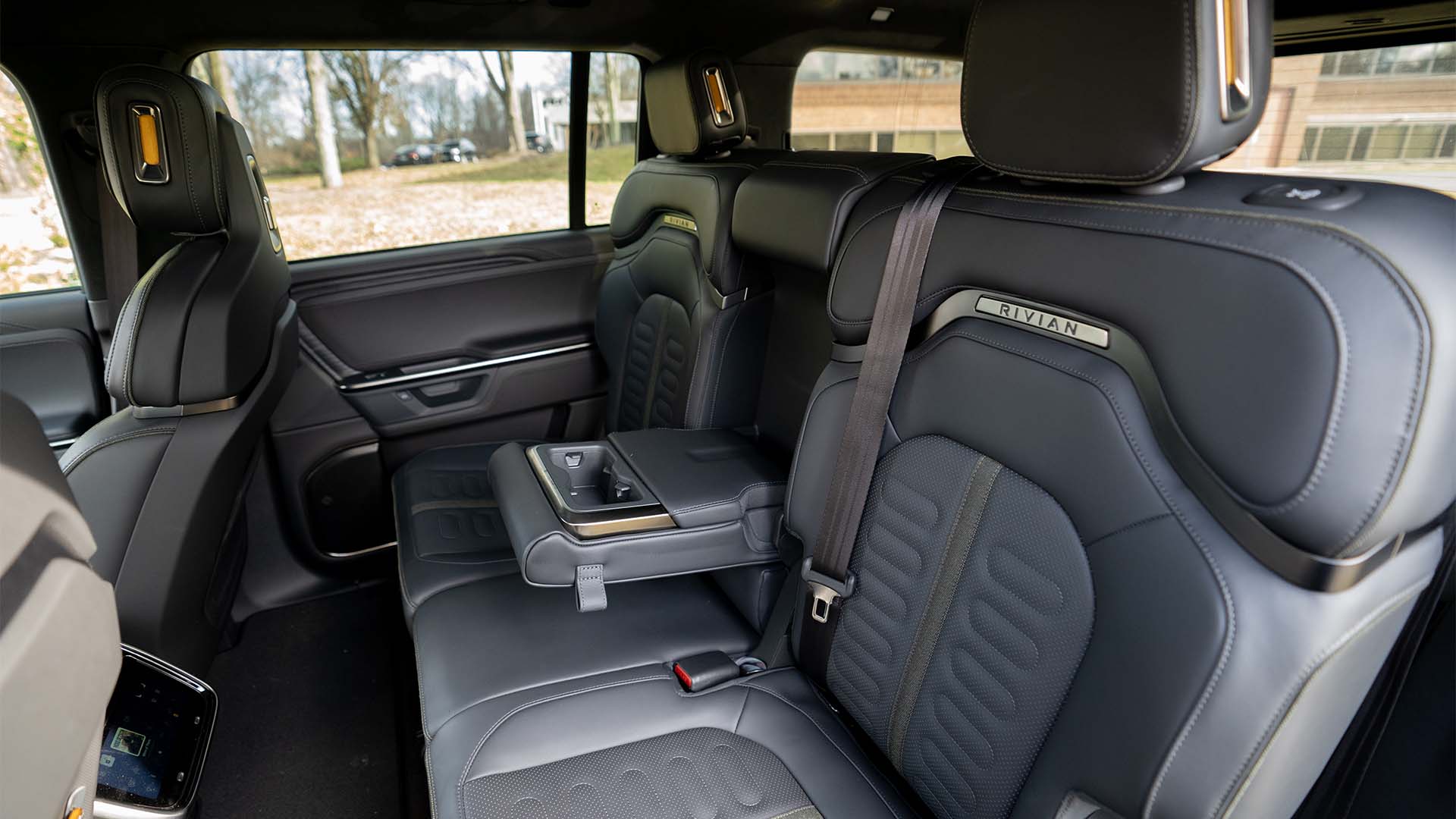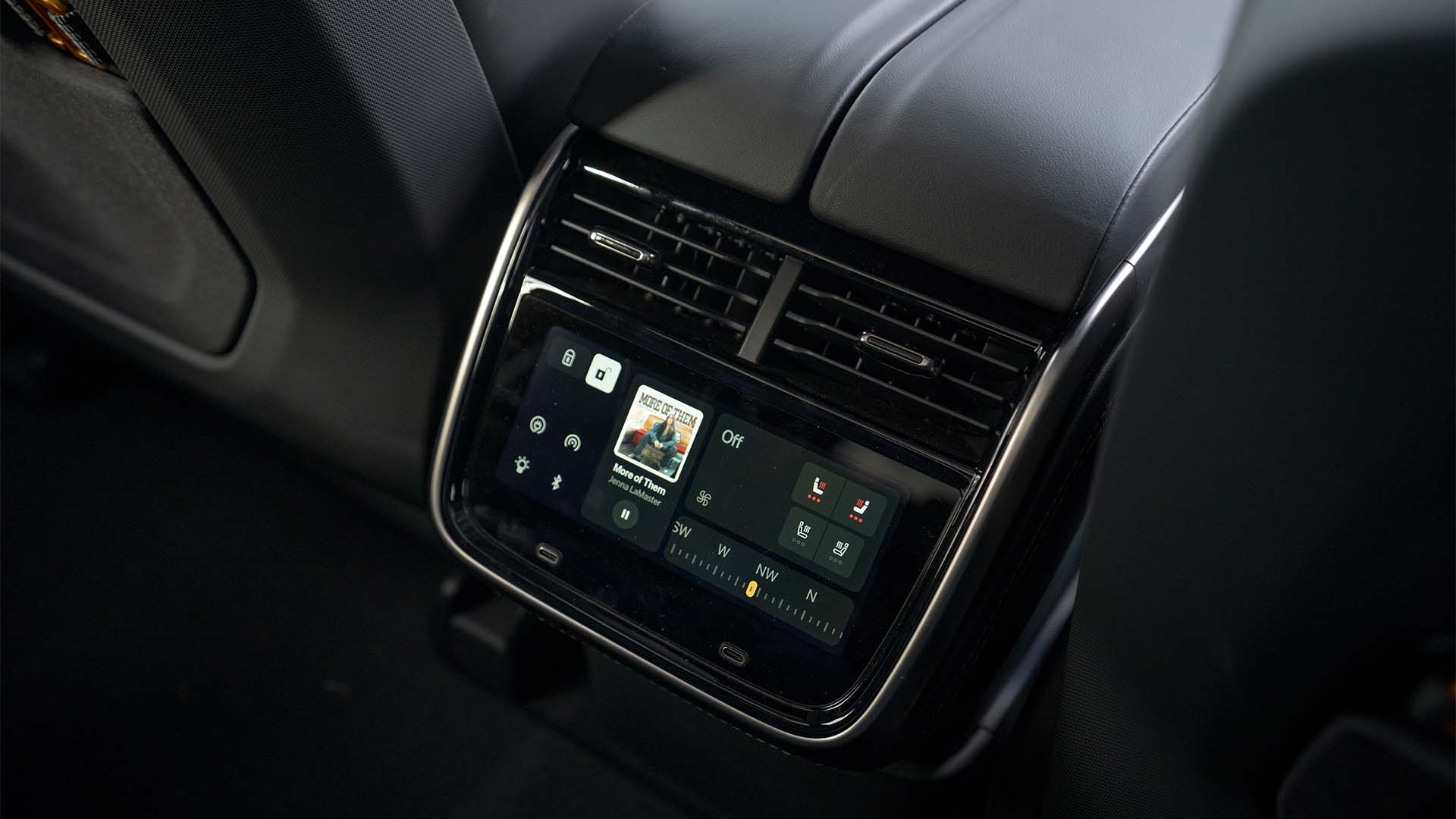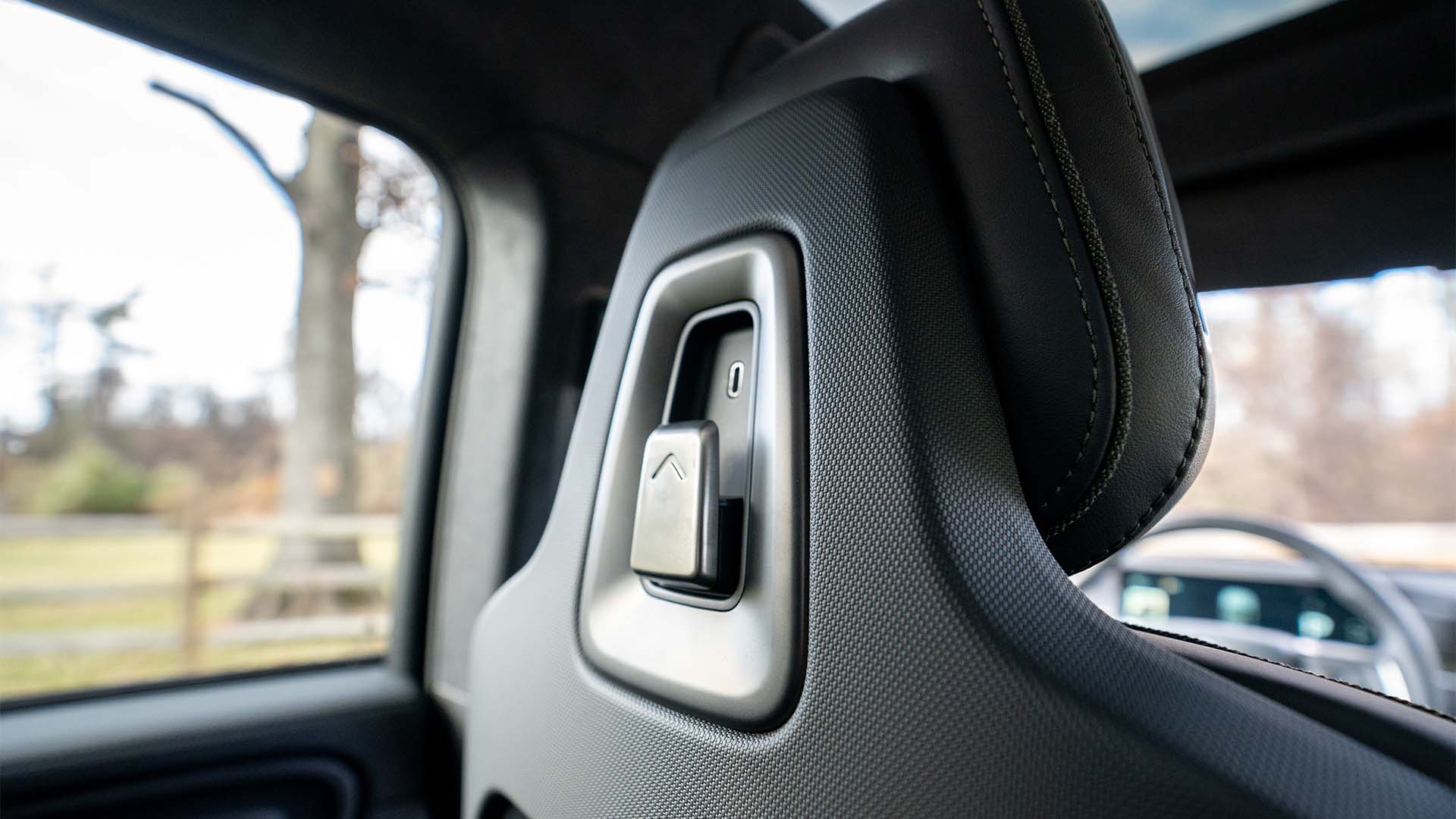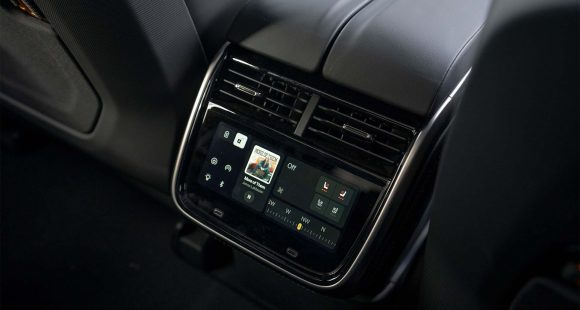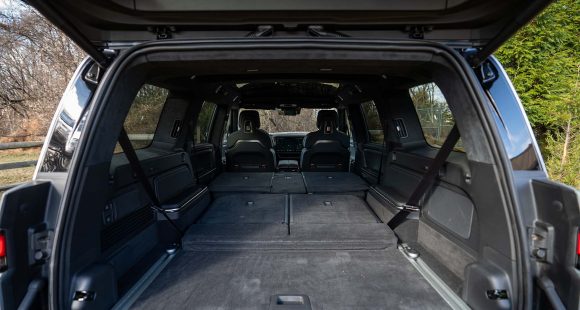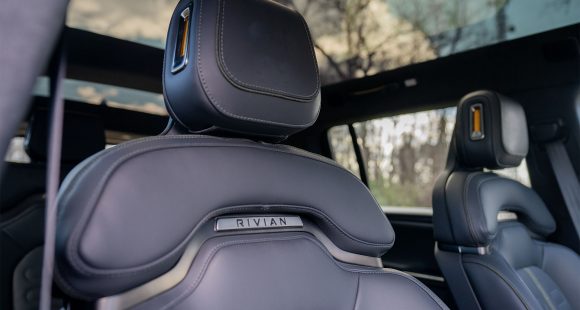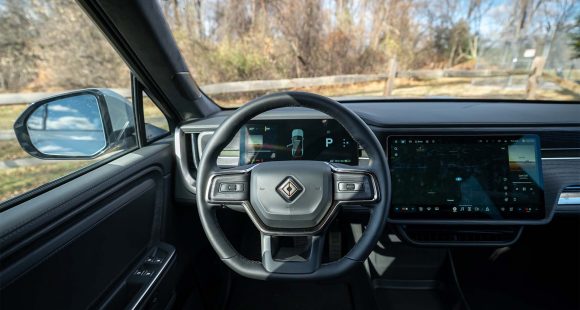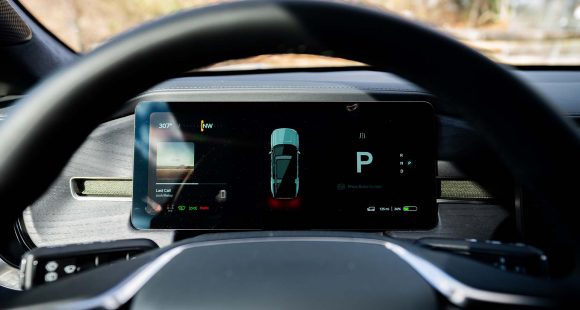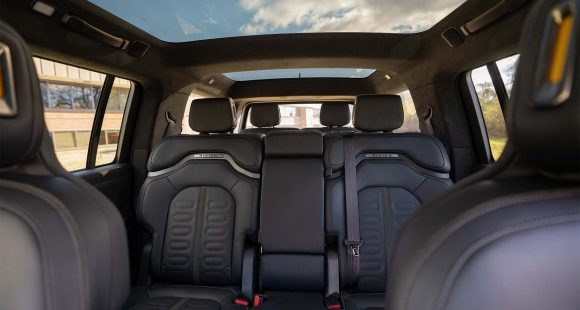2015 Lexus RC F
Now stop us if you’ve heard this one before. Lexus, known for purveying ultra-plush luxury, is now stepping into the performance ring. Okay, so it’s not their first, or even second attempt to shed the soft image for a harder-core one. But, will the results be any different? Let’s hit the track in the new Lexus RC F and find out.
So up until now, Lexus performance, with the exception of the limited production and very exotic LFA, has been more like a karate chop at a gun fight. But this 2015 Lexus RC F coupe just might even the odds.
Indeed, after 3-days of relentless round-da-rounds at the hands of our test team, we can say the RC F definitely has the goods to take on a road course; impressing all of our drivers with a great V8 bark, and nimble chassis bite to back it up.
That V8 is a 5.0-liter with roots that go back to the IS F sedan. Much tweaking has been done since then however, and output is now 467-horsepower and 389 lb-ft. of torque.
 As a rear driver only, the transmission is a beefed up, 8-speed direct shift automatic that worked very well through Roebling Road’s nine turns, even when left in straight-up auto mode.
As a rear driver only, the transmission is a beefed up, 8-speed direct shift automatic that worked very well through Roebling Road’s nine turns, even when left in straight-up auto mode.
While clearly based on the RC 350, Lexus claims that 70% of the RC F’s suspension componentry is new or updated.
Another value added feature is the available torque vectoring rear differential that makes a huge impact on both the RC F’s performance and personality, helping put maximum power to the pavement in corners when in Track mode. Left in Standard mode, it feels like an entirely different vehicle that likes to power-on oversteer more than cling to an apex.
At around 4,000-pounds, the RC F is certainly no lightweight. But it feels and responds much lighter. Through the corners, the bolstered RC F sport seats kept our drivers squarely in place. Yet, they still delivered the comfort that Lexus owners demand.
Though overall highly capable, we could do with less initial understeer at turn-ins. And, the quietness of the RC F’ proficiency makes it less exciting to drive than we’d hoped.
But, those are nitpicks. If there’s one significant weak point, it’s the brakes. Initially they felt great. But after only a few laps, they grew soft and uninspiring.
 Off the turns, and on the straight, this raucous V8 also proved its metal. It loves to rev. There’s not as big a hit of torque right off the line as you might expect, but rather a nice build that gets you fast rather quickly. 0 to 60 takes just 4.4-seconds.
Off the turns, and on the straight, this raucous V8 also proved its metal. It loves to rev. There’s not as big a hit of torque right off the line as you might expect, but rather a nice build that gets you fast rather quickly. 0 to 60 takes just 4.4-seconds.
Despite relying on a true automatic for transmission duties and not a sequential manual; shifts are quick and smooth, with power mostly uninterrupted. Helping us clear the ¼ in 12.8-seconds at 114 miles-per-hour.
Body enhancements galore certainly make the RC F a stand out. There are plenty of both air inlets and outlets, an active rear wing, optional carbon fiber roof, and stacked exhaust tips that give the hind quarters a truly maniacal look.
Its stance is both wider and lower than the RC 350, and you have a choice among 3-different 19-inch wheel patterns. Tire width is staggered, with 255/35s up front and 275/35s in back.
 Despite the comfy seats, the overall interior comes off tighter than a typical Lexus buyer would be accustomed to. But, then, this is everything but a typical Lexus. Still, the usual leather coverings, high quality materials, and high-tech niceties are mostly included.
Despite the comfy seats, the overall interior comes off tighter than a typical Lexus buyer would be accustomed to. But, then, this is everything but a typical Lexus. Still, the usual leather coverings, high quality materials, and high-tech niceties are mostly included.
An F-specific gauge set alters screens depending on driving mode, and the multi-information-display hosts a wealth of info including lap times and even rear wing position.
Now, the real bonus. Even with all of its track prowess, the RC F is also a pleasant street car. The ride is never harsh, and great chassis response means you don’t have to be driving super-fast to enjoy yourself. Government Fuel Economy Ratings are 16-City, 25-Highway, and 19-Combined.
RC F pricing starts at $63,325. That undercuts the benchmark BMW M4 by about 2-grand.
And the F story certainly won’t end here, as Lexus recently debuted a bigger and badder GS F Sedan at the North American International Auto Show.
But, back to the M4. The 2015 Lexus RC F may be a bit cheaper, but is it also a close contender? Well, we think it is surprisingly close on the street, and yes, on the track as well. Who ever thought we would say that! And that is just how far Lexus performance has come.
Specifications
- Engine: 5.0 liter
- Horsepower: 467
- Torque: 389 lb-ft.
- 0-60 mph: 4.4 seconds
- 1/4 mile: 12.8 seconds @ 114 mph
- EPA: 16 mpg city/ 25 mpg highway
2025 Rivian R1S
Major Reboot for Rivian R1S
With just about every mainstream carmaker now onboard with battery-electric vehicles, EV-only brands are hoping there are still plenty of people out there willing to think outside the box. So, let’s see if Rivians latest R1S utility can make the case for taking the EV road less traveled.
Big changes have happened in the short time since the Rivian R1S first hit the streets three years ago. As for 2025, there are updates that touch just about every aspect of the vehicle. Yes, despite looking almost exactly the same outside, Rivian claims that beneath the surface, their entire electrical architecture has been significantly updated, eliminating a whopping mile and a half of wiring and 10 computer assemblies, allowing for more efficient operation.
But look closely and you will see their signature vertical oval headlights are updated with a new matrix of LED lights that can cycle individual elements on and off to provide maximum illumination where you need it without distracting oncoming drivers.
Not much change in the look of the interior either, but the synthetic leather upholstery is still very nicely done, though most touchpoints feel more rugged than luxury minded. With the exception of a couple controls on the steering wheel, you do still have to do almost everything on the R1S’s 15.6-inch touchscreen, but the user interface has been improved. So, while we do wish they could have reverse-engineered a knob or two into the mix, we realize full touchscreen interface is just what people expect in their high-end EVs these days, and at least it works better than before. And the gauge display still wows you with the amount of information it displays and is mounted high enough that no additional head-up display is needed. A new Rivian Autonomy Platform uses 11 cameras, five radars and A.I. for self-driving, or just to monitor what’s going on around the vehicle even when it’s parked.
This [EV] really feels fast, sitting you up high and throwing you back in your seat with authority.
Rivian has also given the R1S a substantial suspension revision with new spring rates, bushings, and mounts; along with new tuning for the adaptive dampers and roll-mitigation system. It does provide a more balanced street attitude, but it still rides like a truck. That’s great if that’s the experience you’re looking for; not as ideal if you’re looking for more of the smooth luxury-style treatment.
All R1Ss are all-wheel drive, but there’s a wide variety of powertrain options including a new Tri-Motor setup. Outputs range from the standard Dual-Motor’s 533 horsepower to the Quad-Motor’s impressive 1,025. There are several battery packs as well, delivering as much as 410 miles of range, giving the R1S the highest rating of any SUV on the market right now. Our Adventure trimmed tester featured the 665-horsepower Performance version of the Dual-Motor arrangement, with the Max battery and 20-inch wheels with all-terrain tires.
Theoretically, that setup is rated for 370 miles, but perhaps we were enjoying the “performance” theme too much as our results were well short of that, using 68% of the battery to drive only 189 miles, putting our estimated range around 278 miles. Using 43 kilowatts of electricity for every 100 miles earns the R1S a fair efficiency rating.
But all was forgiven at our Mason Dixon test track when this Rivian started blasting us to 60 in 3.8 seconds. Yes, there are faster EVs, but this one really feels fast, sitting you up high and throwing you back in your seat with authority, while the rear of the truck squats down substantially before hurling you off the line and down the track. Power delivery stayed strong the entire time, cranking away until we cleared the quarter-mile in 10.5 seconds at 108 mph.
Despite this utility’s substantial size and weight, we were able to keep a pretty fast pace through the cones of our handling course. The all-terrain tires obviously didn’t grip the pavement as well as all-seasons would, but the low center of gravity kept things very flat. Yes, it does feel very heavy, but the brakes were more than up to the task, stopping us from 60 mph in a very short 103 feet with surprisingly little nosedive and no fade.
Pricing starts at $77,700 for the Dual-Motor with Standard battery pack; our Dual-Motor Performance with the Max battery and All-Terrain Package came in just over $102,000.
While Rivian has had great initial success; sustaining that success will be a much tougher task. But, if they continue to put as much effort into improving their products as they have here with the 2025 R1S, we think their winning streak will only accelerate.
Specifications
As Tested
- Motor Setup: Dual Motor
- Battery Size: 141.5 kWh
- Horsepower: 665
- Torque: 829 lb-ft
- EPA Range: 370 miles
- 0-60 mph: 3.8 seconds
- 1/4 Mile: 10.5 seconds at 108 mph
- Braking, 60-0 (avg): 103 feet
- MW Test Loop: ~278 miles













